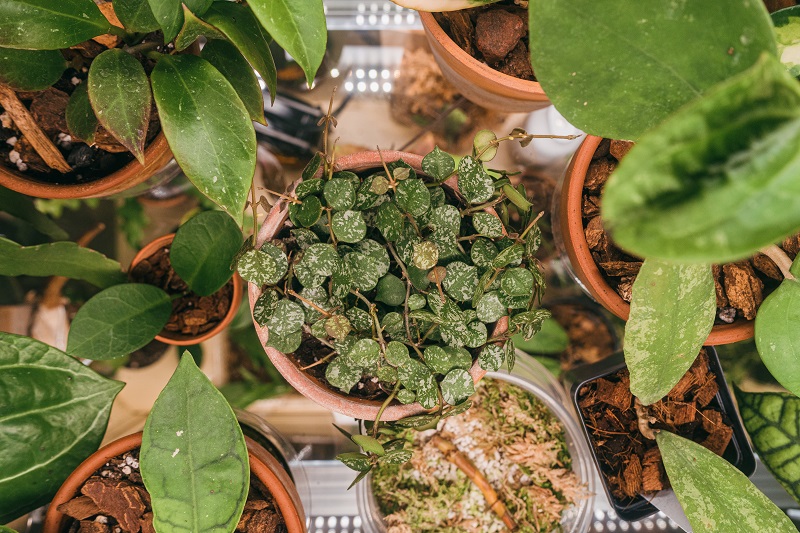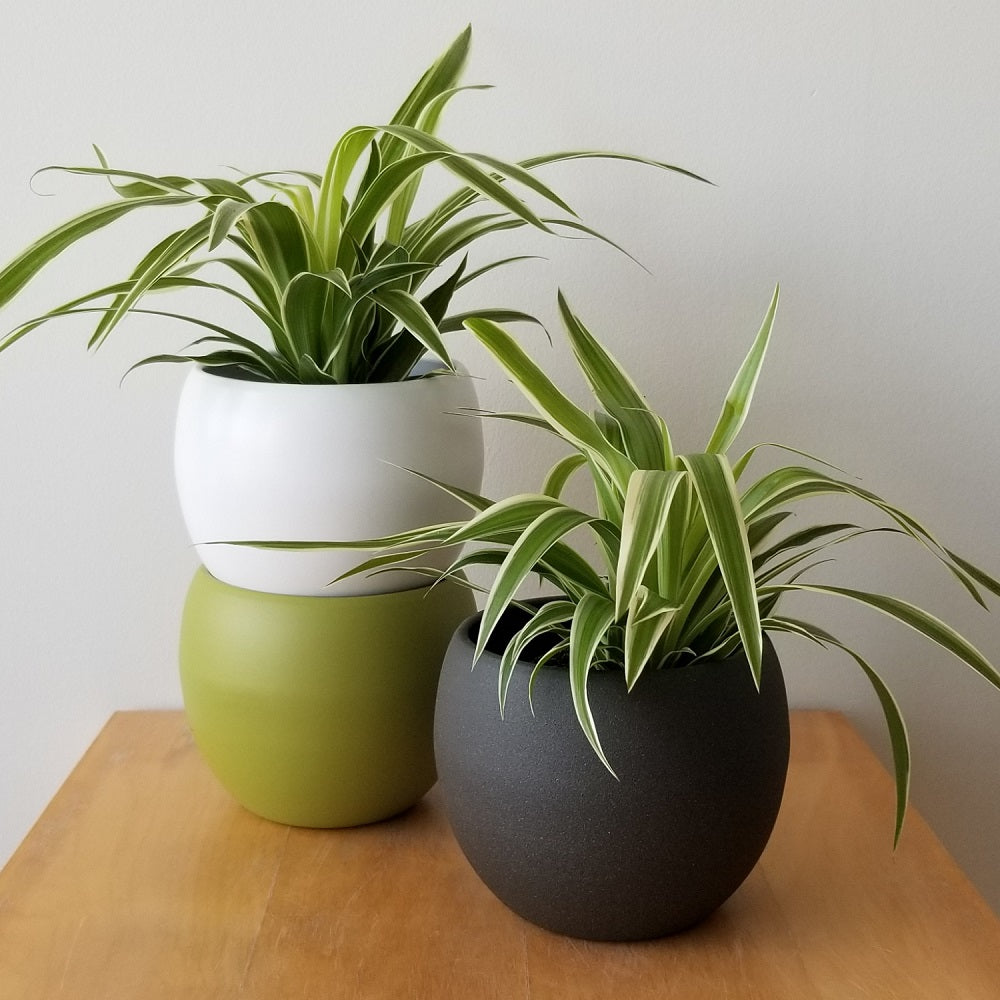
Attractive houseplants include hoya plants, which are often called wax plants. Their glossy leaves and beautiful blossoms have made them famous. Indoors or out, these plants are hardy and low-maintenance.
Hoya plants require special attention. Just make sure they have enough water, soil, and sunshine. Accurate humidity and temperature are also critical. With the right nurturing, they flourish and produce stunning blossoms. Your Hoya will remain healthy and flourishing if you take the time to learn about its requirements.
Getting to Know Hoya Plants
Typical Examples
There is a wide variety of hoya plants. Hoya Bella, Hoya kerrii, and Hoya carnosa are a few prominent varieties. Varieties differ in the shape of their leaves and the color of their flowers.
Distinct Benefits
Waxy leaves and clusters of star-shaped blooms are the hallmarks of a hoya plant. Their adaptability as climbing vines or hanging plants makes them suitable for a variety of interior design styles.
Reasons to Grow Hoya Plants
A house with Hoya plants in it has cleaner air. One more reason they're perfect for people who are often on the go: they require little care. If you take good care of your hoya, it will bloom multiple times a year and last for years.
Minimum Necessities
Optimal Lighting Conditions
The light that is bright and indirect is best for hoya plants. Whether it's morning sunlight or filtered light all day, they do best near windows. Their leaves might become burned if exposed to too much sunshine.
Suggestions for Maximising Visible Light
For soft morning light, plant Hoyas near east-facing windows. Select LED grow lights if you must use artificial lighting, and set them up a few feet above the plants. To make sure the plant gets light from all directions, turn it every so often. This ensures that the Hoya grows uniformly.
Grass and Planting
Top Choices for Soil
Soil that drains effectively is ideal for hoya plants. The ideal mixture for orchids is a combination of perlite, potting soil, and bark. By working together, these two things make it so that water doesn't pool around the roots.
Potting Methods and Advice
Find containers that have holes punched in them for water to drain. Be sure the container is just a little bigger than the root ball when you're potting. That way, the roots have more space to expand. To keep Hoyas healthy and happy, repot them every 2-3 years. Take care not to damage the roots during repotting.
Section Three: Planting Methods and Soil
Top Choices for Soil
To avoid root rot, hoya plants need soil that drains effectively. Orchid bark, perlite, and potting soil are the best ingredients. The combination of these two ingredients keeps the roots wet while facilitating the rapid drainage of excess water.
Potting Methods and Advice
To keep water from pooling, be sure to utilize containers with drainage holes. To give your plant room to grow roots, use a container that is only bigger than its root ball. Repotting Hoya plants every 2-3 years is essential. Nutrients are essential for plant and animal growth, and new dirt provides them. Be careful not to injure the roots during repotting. If you want your plant to establish healthier roots, now is the time to pull them out. After repotting, give the plant a little water and let it rest in indirect light.
When to Water
The Right Way to Water Hoya Plants
When you feel the top inch of soil become dry, water your hoyas. Let the dirt soak up water until it flows out the pores in the drainage system. To prevent water from pooling, let the pot drain entirely. During the winter, when plant growth slows down, water is less frequent.
Symptoms of Both Excessive and Inadequate Watering
If you water your plant too much, it will have mushy stems and yellow leaves. The leaves of hypoxia Hoyas are dry and wrinkled. To keep plants healthy, you need to adjust the time you water them depending on these indicators.
Climate (Heat and Humidity)
Ideal Operating Range for Temperature
The ideal temperature range for hoya plants is 60–85 degrees Fahrenheit. Cold drafts and unexpected decreases in temperature should keep them safe.
What Humidity Is and How to Keep It at a Healthy Level
Hoyas thrive in muggy conditions. Regular misting or the use of a humidity tray will keep the humidity levels just right for the leaves. To further enhance the relative humidity, group many plants together. Think about getting a humidifier if you're in a really dry place.
Having a child
How to Fertilise Hoya Plants Properly
When fertilizing hoyas, use a balanced, water-soluble product. A 10-10-10 formula works well. Potassium, nitrogen, and phosphorus are all supplied in the same proportion by this.
Planning and Execution of Fertilisation
During the spring to fall growing season, fertilize hoyas every four weeks. Cut back on winter feedings
Methods for Propagation
How to Propagate Hoya Plants: A Comprehensive Guide
Make sure the stem you choose is robust, pest-free, and has at least two leaves.
Trim the stem to a point immediately below a node using sterile shears. Here is the spot where the new roots will take root.
To avoid rotting, let the cut end dry for a few hours and then produce a callus.
Applying rooting hormone to the callused end will promote the growth of roots.
Plant the stem in a container of water or a pot of damp, well-draining soil.
Plant the cutting in an area that receives partial, bright sunshine while keeping the soil or water just moist.
A Guide to Fruitful Propagation
If you want your cutting to root successfully, it must originate from a healthy portion of the plant.
A rooting hormone is a powerful tool for promoting healthy root growth.
Overwatering can cause rot, therefore it's important to keep the soil or water consistently moist.
Roots may not fully form for a few weeks, so please be patient.
Transfer the cutting from its initial watering container to a more permanent one once its roots have taken hold.
Tree Trimming and Upkeep
Tips for Trimming Hoya Branches
If you want your Hoya to stay bushy and shapely, you should prune it occasionally. A new shoot can be encouraged by cutting immediately above a leaf node. To maintain plant health, remove yellowing or dead leaves regularly.
Consistent Upkeep Procedures
When watering hoyas, make sure to let the top inch of soil dry out completely in between.
During regular maintenance, look for pests such as mealybugs and aphids.
To improve photosynthesis and attractiveness, wipe leaves with a moist cloth to remove dust.
To make sure the plant grows evenly, turn it over every so often.
Myths and Common Illnesses
Recognizing and Resolving Recurring Problems
Some of the pests that hoyas could encounter are mealybugs, spider mites, and aphids. Insects or sticky leaves are telltale symptoms. Infestations can be treated using neem oil or insecticidal soap. Marks on leaves are an indication of fungal problems. Treat by removing afflicted areas and increasing air circulation.
Protective Steps
Give newly acquired plants a thorough once-over before adding them to your collection.
To keep pests at bay, make sure the leaves are clean.
Give the plants plenty of fresh air.
Fungal infections can develop if plants are overwatered.
Fostering Growth
Advice for Encouraging Blooming
Be careful to give your Hoya plenty of shade. Encouraging the creation of flowers depends on this.
Be sure to water at regular intervals and allow the soil to dry out to a depth of one inch in between. This is a representation of the dry spells that Hoyas encounter in their native environment.
To encourage flowering while the plant is growing, apply a fertilizer rich in phosphorus. This nutrient is useful for the development of flowers.
Influences on the Blooming Process
Inadequate light can inhibit Hoya blooming, making light the most important component.
Consistent temperature is critical. Because of the stress that sudden changes can cause to plants, they may even start blossoming.
The plant's level of maturity is an important factor. The likelihood of flowering in older, more established Hoyas is higher. Let seedlings grow into full-grown plants.
Pruning regularly might also promote blossoming. Maintaining a manageable size and encouraging the plant to generate additional bloom buds are both achieved by pruning.
In summary
From choosing the correct soil and lighting to watering and pruning your Hoya plants, we've got you covered. Hoyas are low-maintenance houseplants that look great and do a good job of purifying the air within.
Think about hoyas if you want a satisfying indoor gardening endeavor. They are hardy and can bring the splendor of nature within. If you give them the attention they need, they will grow and blossom, bringing beauty and scent wherever they go.






